Gabriel Chaile
Los jóvenes olvidaron sus canciones o Tierra de Fuego
Opening – 26 APR 2024, 6-9 pm
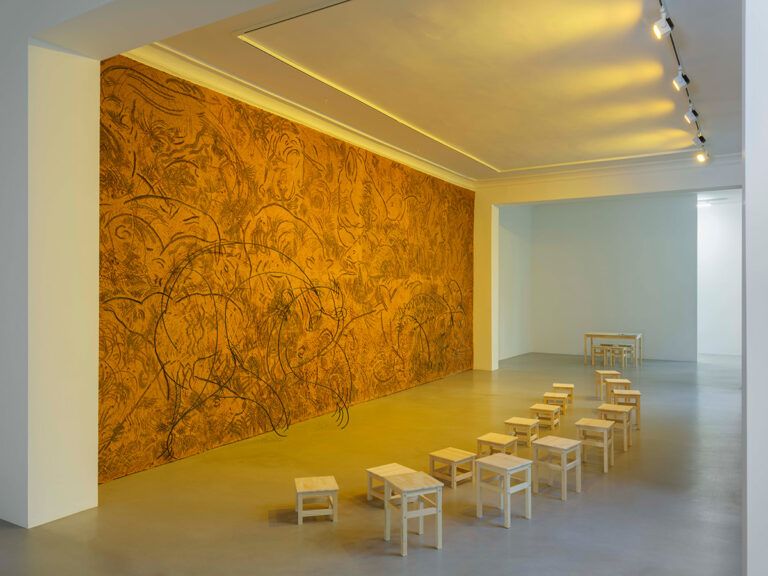
Gabriel Chaile, Installation view of “Los jóvenes olvidaron sus canciones o Tierra de Fuego”, ChertLüdde, Berlin, 2024
Photo by Marjorie Brunet Plaza
Courtesy of Gabriel Chaile, Lisbon and ChertLüdde, Berlin
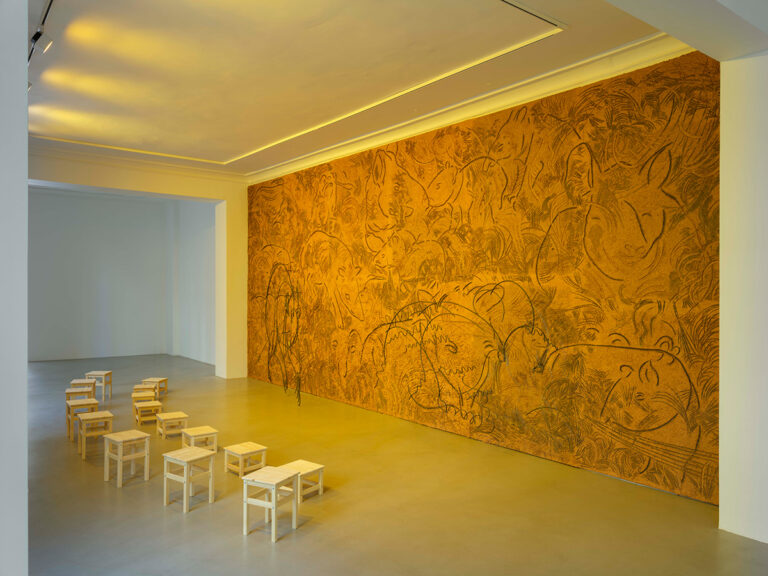
Gabriel Chaile, Installation view of “Los jóvenes olvidaron sus canciones o Tierra de Fuego”, ChertLüdde, Berlin, 2024
Photo by Marjorie Brunet Plaza
Courtesy of Gabriel Chaile, Lisbon and ChertLüdde, Berlin
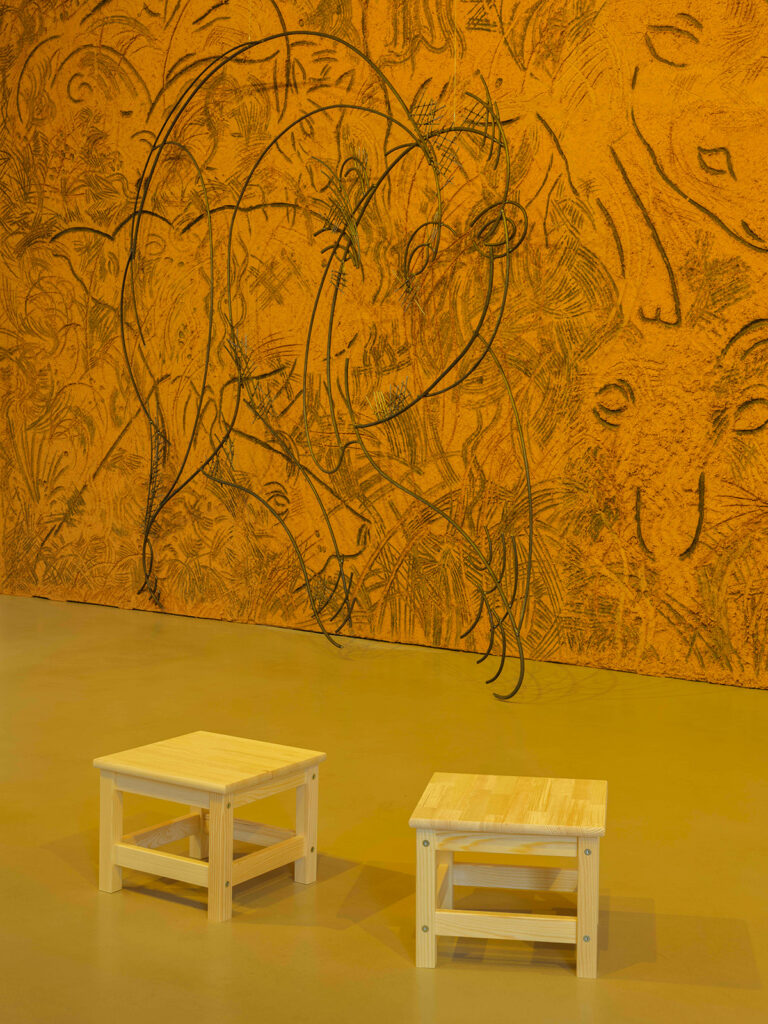
Gabriel Chaile, Installation view of “Los jóvenes olvidaron sus canciones o Tierra de Fuego”, ChertLüdde, Berlin, 2024
Photo by Marjorie Brunet Plaza
Courtesy of Gabriel Chaile, Lisbon and ChertLüdde, Berlin
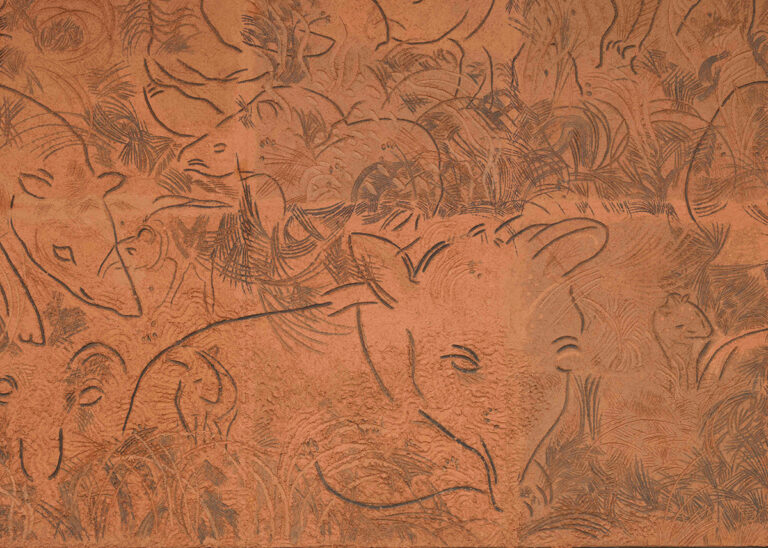
Gabriel Chaile, Detail of “Los jóvenes olvidaron sus canciones o Tierra de Fuego”, ChertLüdde, Berlin, 2024
Photo by Marjorie Brunet Plaza
Courtesy of Gabriel Chaile, Lisbon
For the exhibition Los Jóvenes Olvidaron sus Canciones o Tierra de Fuego (The youth forgot their song), Gabriel Chaile’s second solo show at ChertLüdde, the artist carves the image of the Argentinian tapir into a broader historical framework. Leaving behind strokes and lines within adobe clay, Chaile creates a forest full of tapir within the exhibition space. Imaginative and vigorous, his environmental installation gathers around an adobe bas-relief about 10 meters in length in the center of the exhibition. Its figurative presentation of the tapir is a challenge to monumental narrative structures that seek to erase pre-colonial heritage.
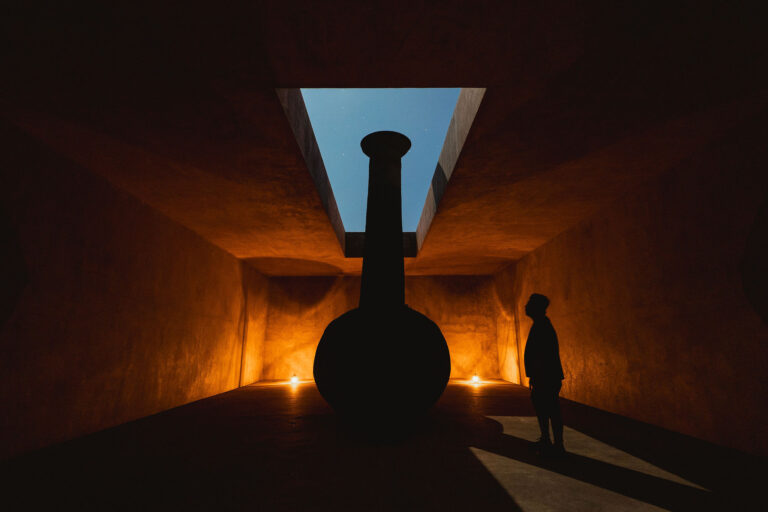
Gabriel Chaile, Installation view of “No se me quita lo naco” at Meridiano, Puerto Escondido, 2023, Photo Alex Krotov, Courtesy of Gabriel Chaile, Lisbon
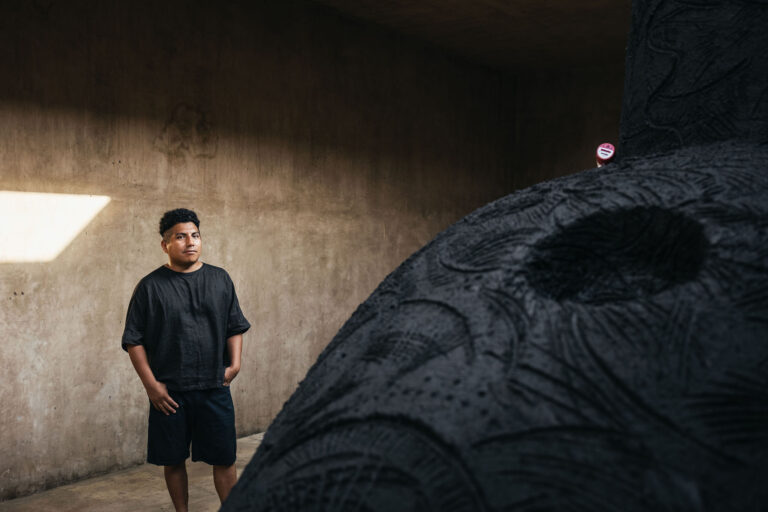
Gabriel Chaile, Installation view of “No se me quita lo naco” at Meridiano, Puerto Escondido, 2023, Photo Alex Krotov, Courtesy of Gabriel Chaile, Lisbon
The tapir, characterized by its robust build and short proboscis, belongs to a very ancient genus of mammals most closely related to rhinos and horses. The most primitive large mammals in the world, existing for over 20 million years, the tapir can still be found across the globe in South America, Central America, and Southeast Asia. In each of these places, the tapir plays a fundamental role in dispersing seeds through their defecation, making them indispensable to human life and nature. Chaile chooses to focus on the native species of Argentina, which are on the verge of extinction due to the rapid disappearance of tropical forests caused by the timber industry and slash-and-burn agriculture. By recreating this rare animal in adobe, Chaile reflects on the similarities of these systems and practices to colonial erasure and the loss of indigenous cultures, traditions and life.
Adobe is the artist’s signature material used for his sculptures and installations presented at venues such as Berkeley Art Museum and Pacific Film Archive (BAMPFA) (2023-2024); The High Line, New York (2023-2024), the 59th Venice Biennale (2022), the New Museum Triennial, New York (2021-2022) and Art Basel Cities, Buenos Aires (2018). The material connects not only to the pre- Columbian indigenous artistic tradition but also to the richness of the earth and the importance of connection with nature.
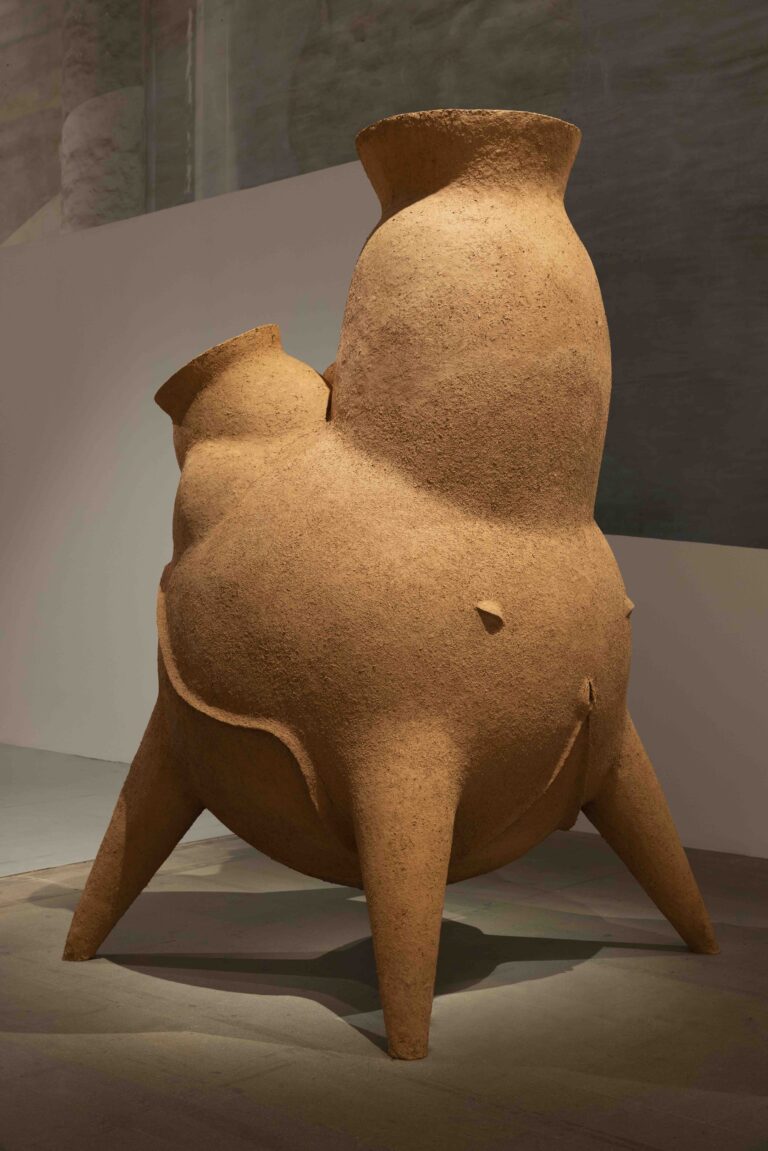
Gabriel Chaile, Brenda, 2022; Installation view of Piazza Sant’Antonio, Ortisei; Commissioned by Biennale Gherdëina, 2022,
Photo Tiberio Sorvillo,
Courtesy BARRO Arte Contemporáneo, Buenos Aires and Gabriel Chaile, Lisbon and ChertLüdde, Berlin
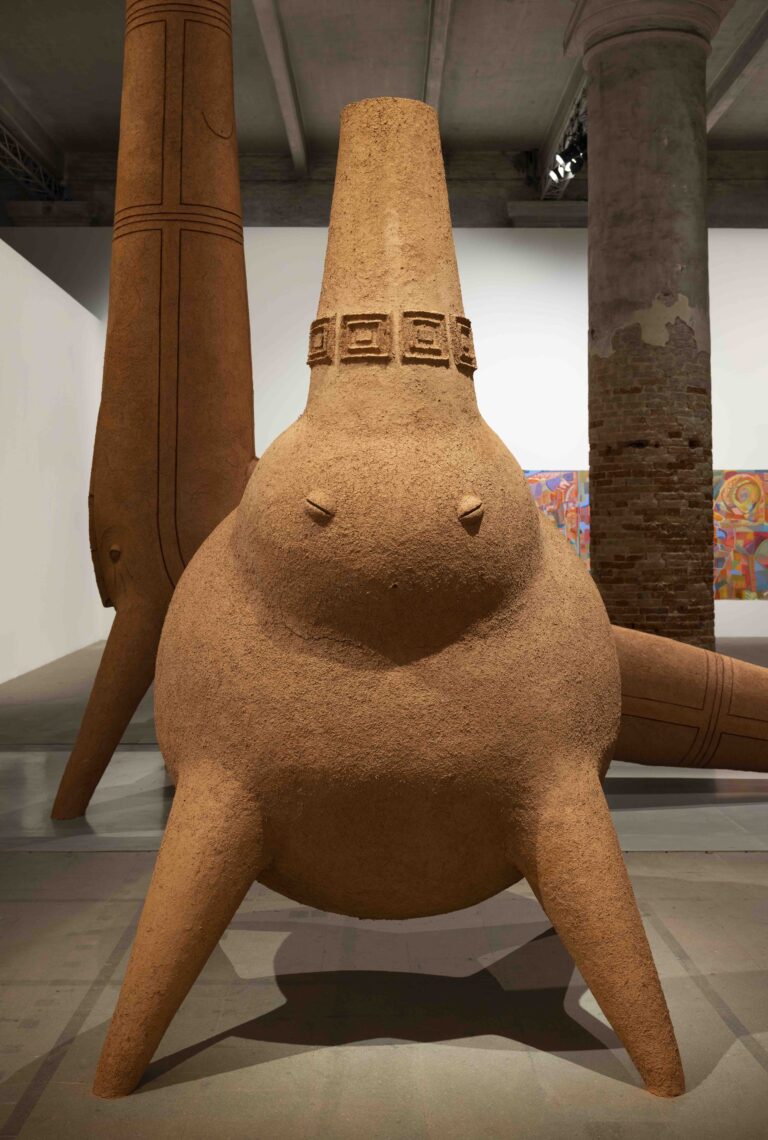
Gabriel Chaile, Brenda, 2022; Installation view of Piazza Sant’Antonio, Ortisei; Commissioned by Biennale Gherdëina, 2022,
Photo Tiberio Sorvillo,
Courtesy of BARRO Arte Contemporáneo, Buenos Aires and Gabriel Chaile, Lisbon and Florian Lüdde, Berlin
As Gabriel Chaile reconstructs the tapir’s natural environment, the viewers begin to reflect on the important relationships between humans and tapir. In acknowledging that among the people protecting the tapir, many come from indigenous tribes, Chaile recreates the scenes and scenery of his native Argentina into a lasting ballad.
BIOGRAPHY
Gabriel Chaile (1985, San Miguel de Tucumán) lives and works between Buenos Aires and Lisbon. He works between the fields of anthropology, religion and art. His work is rooted in the indigenous cultures of Northeast Argentina, aiming to reconstruct and continue the lineage of his culture developing upon a theory that Chaile calls “the genealogy of form”. He refers to himself as a “communicator of images”, which he finds through contextual observations, acting as a visual anthropologist in the way indigenous forms and materials have survived time and denote resistance, such as the clay oven or the common pot. Working frequently with natural elements such as adobe, mud and metal, Chaile weaves stories that readdress and revitalize the tales of his ancestors and his community, integrating the ritualistic and communal significance of food and public spaces into his practice.
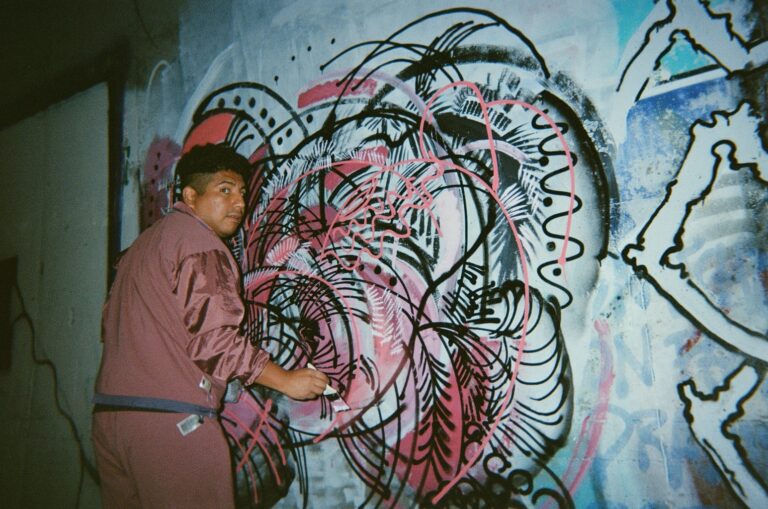
Portrait of Gabriel Chaile by Tomas Bargão Henriques
Courtesy of Gabriel Chaile, Lisbon and ChertLüdde, Berlin
His public sculpture at The High Line, New York will remain on view until April 2024. In 2022, he participated in The Milk of Dreams, the 59th Venice Biennale curated by Cecilia Alemani. His project has now been acquired by Museo de Arte Latinoamericano de Buenos Aires and will soon be turned into an outdoor pavilion.
Sofia Salazar Rosales
The Desire to Dance with Someone Who Is Not Here
Opening – 26 APR 2024, 6-9 pm
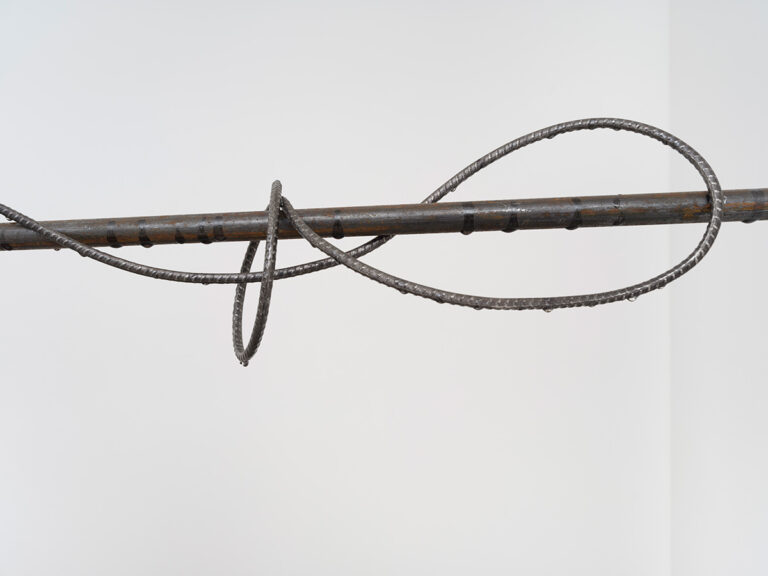
Sofía Salazar Rosales, “While the wounds are open”, 2024; Iron filings, cardboard, plaster, bull’s eye seed, glass beads, paraffin, chicken wire, padding, gauze, metal, fiberglass, polyester resin, epoxy; 207 × 90 × 282 cm
Photo by Marjorie Brunet Plaza
Courtesy of The Artist and ChertLüdde, Berlin
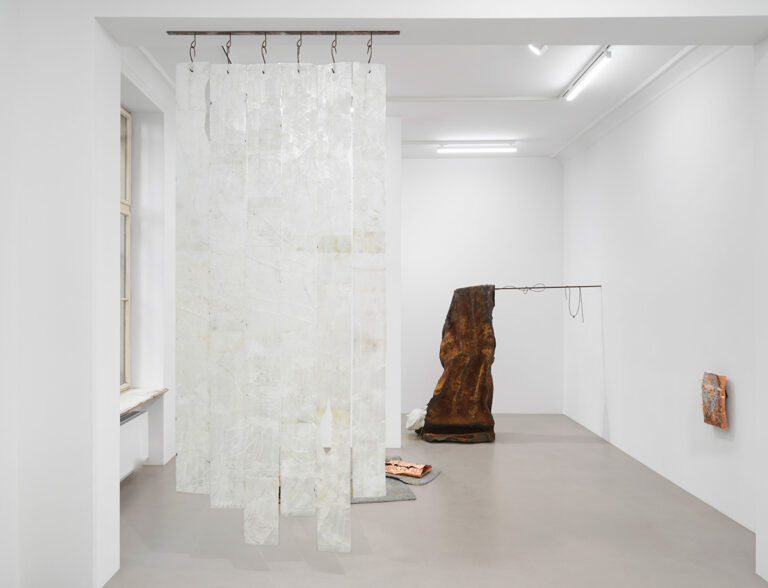
Sofía Salazar Rosales, Installation views of “The desire to dance with someone who is not here”, ChertLüdde, Berlin, 2024
Photo by Marjorie Brunet Plaza
Courtesy of ChertLüdde, Berlin and Sofía Salazar Rosales, Amsterdam
The Desire to Dance with Someone Who Is Not Here is the most recent exhibition by the Cuban-Ecuadorian artist Sofia Salazar Rosales (1999, Ecuador), marking her second solo show at ChertLüdde, presented during the Berlin Gallery Weekend. For this occasion, the artist has crafted a series of sculptures specifically tailored for the exhibition space, delving into the intricate relationship between Salazar Rosales’s ancestral roots and her personal history. Once again, poetry takes center stage in her artistic practice, yet this time, dance serves as the pretext. How does one grapple with the longing to dance with someone who is absent? Can we replace the void with a tangible body, the silhouette with an idea, the object with its representation?
The Desire to Dance with Someone Who Is Not Here prompts the viewer to consider dancing with a stranger, embracing the uncertainty that ensues. Within the intimacy of two bodies intertwining freely in motion, lies the essence of this proposal. Salazar Rosales’s sculptures are conceived as dancing bodies—fluid, permeable, and poised in space, awaiting a partner.
Salazar Rosales compares the act of dancing to that of sculpting, highlighting the enchantment of two bodies moving in synchrony to the rhythm of a song – be it a son, a bolero, or a salsa – unaware and unconstrained by each other’s limitations and capabilities. She herself initiates this dance with the materials, carefully manipulating and molding them until achieving the desired sculptural organicity. It is through this reciprocal interaction, this dance of exploration and refinement, that mutual recognition and subsequently, empathy, emerge.
Building upon this premise, the artist proposes an inquiry into the deeper significance underlying the creation of a sculpture, considering the various stages and processes it undergoes. The intention is to unveil, through the presence of installations born from her intimate experiences and her personal and collective memories, the life cycle of her creations conceived as living entities. These stages encompass the inception of an idea, its development, its presentation, and ultimately, its culmination or “end,” which in this context, denotes the intentional engagement
with the audience.
More than just an show, this will be a fusion of referential and autobiographical narratives, forming an authentic visual and conceptual medley. From the enlarged renditions of her mother’s handmade earrings to meticulously crafted replicas of wrappers, her sculptures take on life, transforming the gallery into a dance floor. It’s akin to “learning to dance on unfamiliar terrain,” echoing another recurring theme in her practice: the significance of context and the ability to transcend it.
This installment, unveiled at the ChertLüdde Gallery, serves as a continuation of There are Bodies Tired from the Journey Seeking to Root, originally presented in 2022 at the Bungalow space. However, while the pieces showcased at Bungalow encapsulated Salazar Rosales’s life experiences during her time in Lyon, this exhibition incorporates and reflects the influences of three destinations she has lived in or visited since then: Paris, Amsterdam, and Cuba.
Text by Dayneris Brito
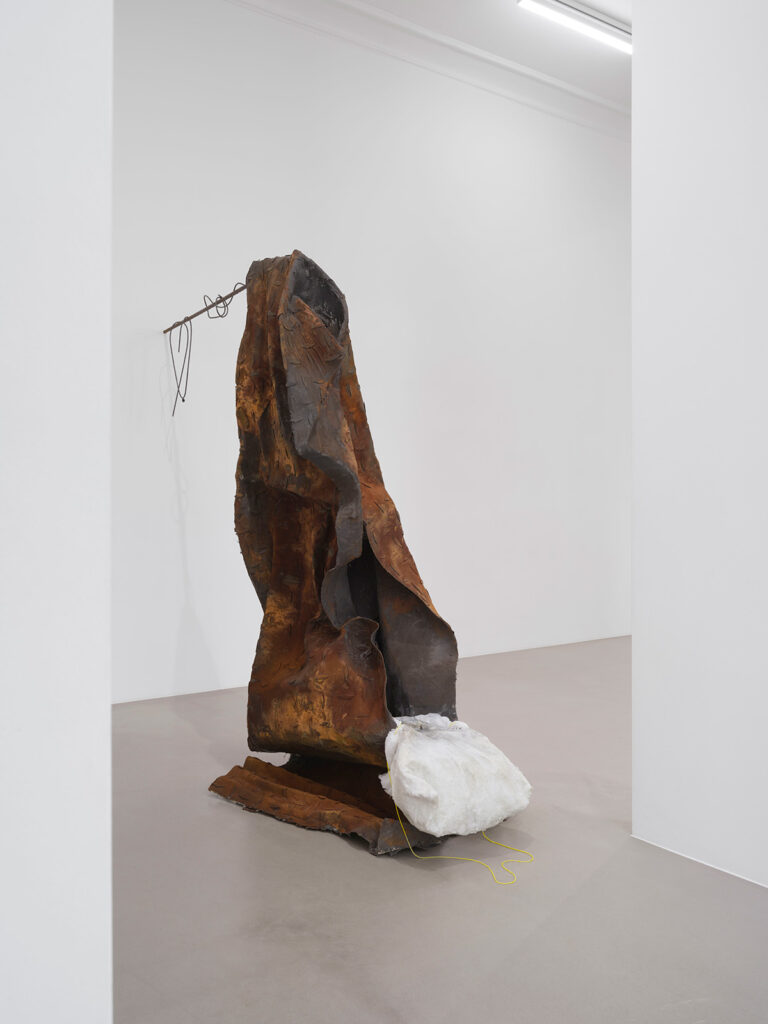
Sofía Salazar Rosales, Installation views of “The desire to dance with someone who is not here”, ChertLüdde, Berlin, 2024
Photo by Marjorie Brunet Plaza
Courtesy of ChertLüdde, Berlin and Sofía Salazar Rosales, Amsterdam
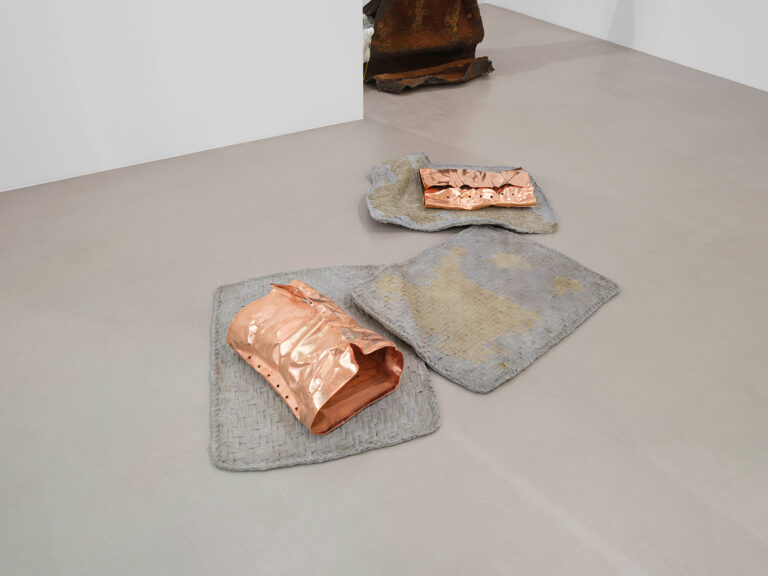
Sofía Salazar Rosales, Installation views of “The desire to dance with someone who is not here”, ChertLüdde, Berlin, 2024
Photo by Marjorie Brunet Plaza
Courtesy of ChertLüdde, Berlin and Sofía Salazar Rosales, Amsterdam
BIOGRAPHY
Sofía Salazar Rosales (1999, Ecuador) lives and works between Paris, France and Quito, Ecuador. She has recently completed a master’s degree at the School of Fine Arts (ENSBA Paris) in the ateliers of Tatiana Trouvé, Petrit Halilaj and Álvaro Urbano. She holds a Bachelor of Fine Arts degree with distinction from School of Fine Arts of Lyon (ENSBA Lyon) where she worked in the studios of Pauline Bastard and Niek Van de Steeg. This year, she was also selected for the two-year residency at De Ateliers in Amsterdam. Salazar Rosales’s work develops from a sentence she wrote: “Hay cuerpos cansados por el viaje que buscan enraizarse” (There are bodies tired from the journey that seek to root). Her interest focuses on how objects have a potential to show social, political, and economic contexts, specifically linked to the displacement of humans, goods and other objects. She conceives her pieces as spaces of reconciliation to negotiate between the object, the material and their history throughout different contexts. Reconciling is also a constructive gesture in her work, which continuously transforms the objects with particular focus on their emotional effect. Salazar Rosales and her sculptures have a relationship of affection. The artist says: “We are contextual, but also sentimental.” In 2023, she was nominated for Premio illy Sustain Art Prize and Emerige- CPGA Prize and in 2022, she won the SARR Prize. Her first publication Hay cuerpos cansados por el viaje que buscan enraizarse (There are bodies tired from the journey seeking to root) was published by ChertLüdde on the occasion of her 2022 solo exhibition at Bungalow, Berlin and contains letters from her diary addressed to her sculptures.
